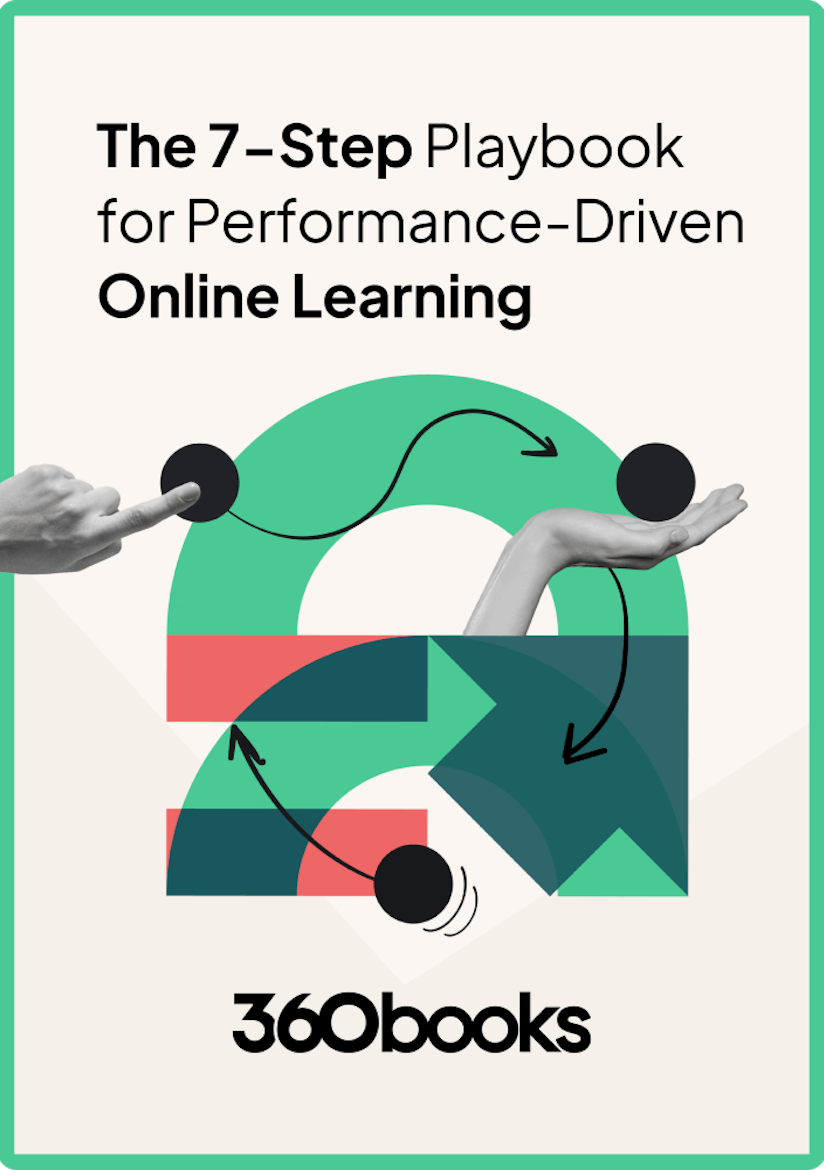
Learning communities transform organizations through knowledge sharing, spearheading practice, solving problems, and seeding innovation.
So, how can you develop organizational learning communities in your organization?
In this article, with insights from Andy Lancaster, Chief Learning Officer at Reimagine People Development and author of Organizational Learning Communities, we explore the key statistics that back social learning and Andy’s seven C’s model for socialized learning communities.
Listen to our L&D Podcast episode: Organizational Learning Communities With Andy Lancaster

Is your online learning boring? Not anymore.
By providing your contact info, you agree to receive communications from 360Learning. You can opt-out at any time. For details, refer to our Privacy Policy.
Social learning is number one
All the research suggests that social learning is an approach that learning and development needs to either recapture or improve.
The CIPD Learning at Work Report 2023 found that 92% of respondents said that community-based learning contributes to a stronger sense of belonging, and 90% of teams said they learned skills better in a collaborative environment.
“If we want people to feel that they belong in organizations, that they've got that strong engagement, then community-based learning is right in line,” says Andy.
“If we want people to feel that they belong in organizations, that they've got that strong engagement, then community-based learning is right in line.” - Andy Lancaster
360Learning’s 2024 State of Online Learning report reinforces this, with 91% of respondents saying that learning from peers and colleagues was either very helpful or helpful in the effectiveness of their own growth and development at work.
Common types of learning communities
A learning community can consist of as few as three people, and the smaller communities are often the most powerful.
“Learning communities are not about us developing people. It’s about providing an environment where people develop themselves,” says Andy.
Common types of learning communities include the following:
- Community of practice: A group that shares a desire to learn how to do a skill or task better as they regularly interact.
- Community of interest: A group with a common passion that shares insights and thoughts about this interest.
- Professional learning networks: A group that facilitates sharing knowledge and experiences for professional growth.
- Socialized action learning sets: A group that works to solve real-life problems through collaborative learning.
Four foundational theories behind learning communities
While researching his new book, Andy found four theories that form a solid foundation for developing organizational learning communities.
“There's no doubt that social learning theory shows that just being with people is really important,” says Andy.
Here are the four theories outlined in Organizational Learning Communities:
- Social Learning Theory: Most human behavior is learned through observation and being alongside others.
- Social Constructivism: The social context in which we learn is crucial to development, such as being around more experienced people.
- Scaffolding Learning Theory: People learn as they build environments, of which communities are a great example.
- Situated Learning Theory: The best learning takes place in context.
“There's no doubt that social learning theory shows that just being with people is really important."
The Seven C's Model for socialized learning communities
If you’re looking to facilitate learning communities in your L&D practice, Andy developed the seven C’s model to get you started.
1. Cause: Each learning community needs to be launched around a specific problem that you’re setting out to solve.
2. Culture: The best learning communities have a strong culture based on psychological safety and altruism.
“The best communities are the people who are generous and willing to give,” says Andy.
3. Conditions: You need to create the right conditions for your communities. Consider and intentionally design for digital, hybrid, or face-to-face meetings.
4. Cadence: Plan and design your communities around activities to create a rhythm that learners can follow.
5. Content: Great communities seed themselves with great content, research, and thinking. Design your communities around a content curation strategy.
6. Contributions: Encourage and facilitate learners' contributions to the collaborative learning process. For example, promote working out loud.
7. Credit: The communities that make the best impact value contributions, so give learners credit where and when it is due.
“The best communities are the people who are generous and willing to give."
Two case studies: Guilds and learning spaces
The guild structure at Bloomberg and Ravensbourne College’s learning spaces are two great examples of facilitating learning communities.
Ravensbourne College in London designed the building to be a social learning experience. Learners can move things around and change the shapes of spaces, including formal, informal, and collaborative learning spaces.
“When I went in there, I just stood there, and it was just wonderful to think that you could design a space for collaborative learning,” says Andy.
At Bloomberg, they set out to facilitate better information so the business can make sound decisions. The organization created learning communities as a guild structure around topics such as C++, Java, machine learning, and natural language processing.
Explore further insights on learning communities by picking up Andy’s book or checking out the episode of The L&D Podcast: Organizational Learning Communities With Andy Lancaster
Want more peer insights on transforming workplace learning? Sign up to become a member of the L&D Collective. Or you can subscribe below to our weekly newsletter to receive our latest posts directly in your inbox.




